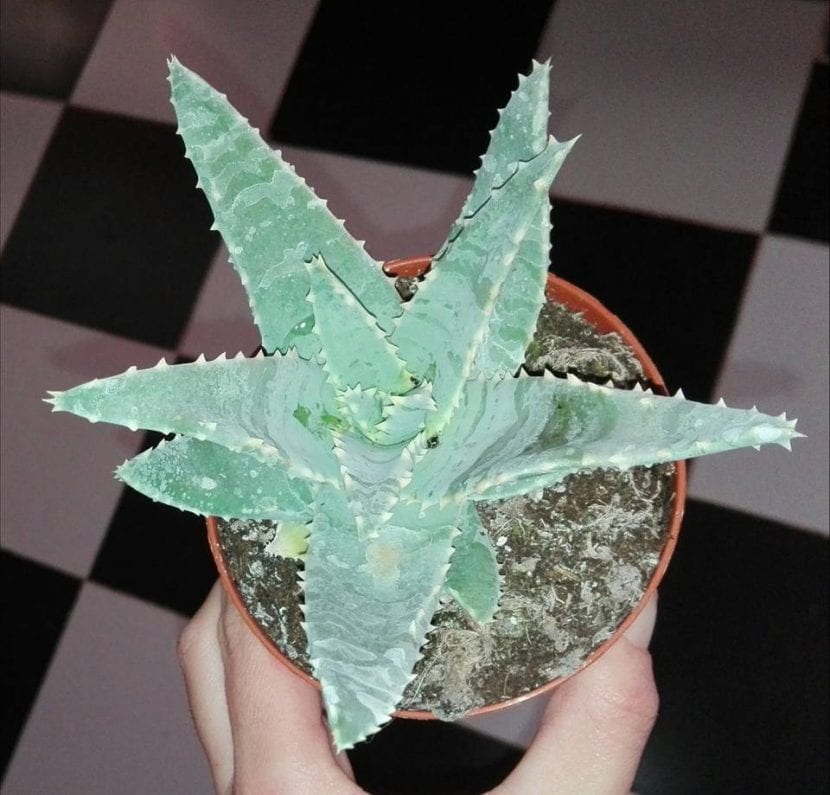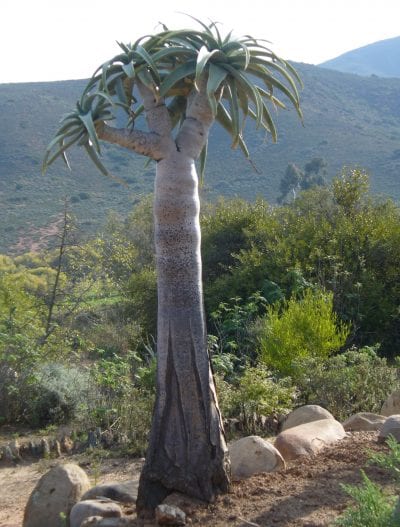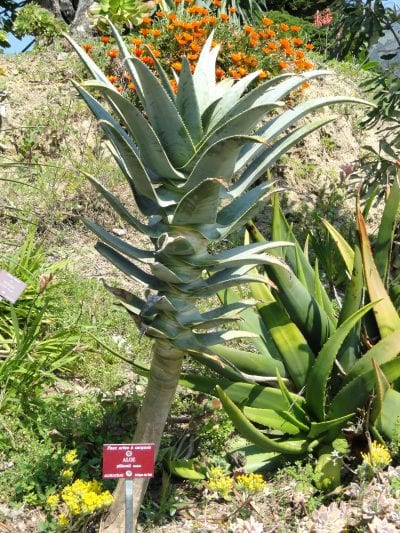
Young specimen of Aloe pillansii
Originally from the African continent, specifically from Namibia and South Africa, the Aloe pillansii it is one of the most beautiful species of aloe. It grows to 5-6 meters in height, with a thick trunk of a spectacular grayish color.
It is one of the most beautiful plants in all of Africa, and also one of the most endangered. Because of this, it is not easy to find them for sale and, even so, we have to make sure that they are plants that are sold legally and that they have not been removed from their habitat.
Aloe pillansii characteristics

Nice, right? Our protagonist is a magnificent garden plant. The leaves form a rosette, and are fleshy, whitish-green in color with serrated edges.. The flowers, which sprout in autumn, are grouped in yellow inflorescences.
Due to its state of conservation and its growth rate, which is very slow, measures are being taken not to lose it. In fact, it is produced in Namibia, at Cornell's Kop Richtersveld, in the north of Brandberg.
What do you need to live?

Growing in the tropical and subtropical grasslands, you need to live in an area with a mild climate, where frosts do not occur or are very weak (up to -2ºC), of short duration and punctual; otherwise it would have to be kept inside the home, in a room with plenty of natural light.
If we talk about irrigation, it has to be scarce, letting the substrate dry between waterings. He does not like having "wet feet." For this reason, it is very important to check the humidity of the soil before watering, inserting a thin wooden stick to the bottom of the pot. If when you take it out it comes out practically clean, then we can water.
The substrate has to have very good drainage (you have more information on this subject here). The roots have to be very well aerated, so to achieve this there is nothing like use sandy substrates such as akadama, pumice or similar. This way we will not only achieve a healthy plant, but also its trunk will widen without problems 😉.
Finally also you will need regular fertilizers, for example with Nitrofoska. A small spoonful every 15 days will be more than enough to grow properly.
What did you think of this Aloe? Did you know him?